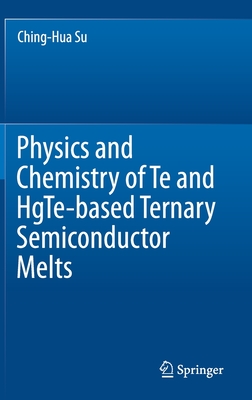Theory and Design for Mechanical Measurements, 7/e (GE-Paperback)
Richard S. Figliola , Donald E. Beasley
- 出版商: Wiley
- 出版日期: 2021-07-08
- 售價: $1,615
- 語言: 英文
- 頁數: 624
- ISBN: 1119706408
- ISBN-13: 9781119706403
下單後立即進貨 (約5~7天)
商品描述
Theory and Design for Mechanical Measurements provides a well-founded, fundamental background in the theory and practice of engineering measurements. Designed to align with a variety of undergraduate course structures, the book offers a rigorous treatment of the subject with a flexible pedagogical framework for use in graduate studies, independent study, or professional reference. It integrates the necessary elements to conduct engineering measurements through the design of measurement systems and measurement test plans, with an emphasis on the role of statistics and uncertainty analyses in that process. This International Adaptation offers new or expanded material on several topics, mostly under Fundamentals of Measurement, Systematic and Random Errors and Standard Uncertainties, Sensors and Actuators. Along with extensive coverage of device selection, test procedures, measurement system performance, the book includes practical discussion on real-world methods and techniques. The current applications of measurement theory and design are presented with examples, case studies, and vignettes. The updated end-of-chapter material includes significant number of new problems.
商品描述(中文翻譯)
《機械測量的理論與設計》提供了一個扎實的基礎,涵蓋了工程測量的理論和實踐。該書設計適用於各種本科課程結構,以靈活的教學框架提供了嚴謹的學科處理,可用於研究生學習、自主學習或專業參考。它通過測量系統的設計和測量測試計劃的設計,整合了進行工程測量所需的必要元素,並強調統計和不確定性分析在該過程中的作用。這本國際適應版在多個主題下提供了新的或擴展的材料,主要包括測量基礎、系統性和隨機誤差以及標準不確定性、傳感器和致動器。除了廣泛涵蓋設備選擇、測試程序、測量系統性能外,該書還包括有關實際方法和技術的實用討論。書中還通過例子、案例研究和插圖介紹了測量理論和設計的當前應用。更新的章末材料包括大量的新問題。
目錄大綱
Table of contents
1 FUNDAMENTAL OF MEASUREMENTS
1.1 Introduction
1.2 General Measurement System
1.3 Experimental Test Plan
1.4 Calibration
1.5 Standards
1.6 Presenting Data
1.7 Loading Effects
1.8 Applications of Measurement Systems
Summary
Nomenclature
References
Problems
2 STATIC AND DYNAMIC CHARACTERISTICS OF SIGNALS
2.1 Introduction
2.2 Input/Output Signal Concepts
2.3 Signal Analysis
2.4 Signal Amplitude and Frequency
2.5 Fourier Transform and the Frequency Spectrum
Summary
References
Suggested Reading
Nomenclature,
Problems
3 MEASUREMENT SYSTEM BEHAVIOR
3.1 Introduction,
3.2 General Model for a Measurement System
3.3 Special Cases of the General System Model
3.4 Transfer Functions
3.5 Phase Linearity
3.6 Multiple-Function Inputs
3.7 Coupled Systems
Summary
References
Nomenclature
Subscripts
Problems
4 PROBABILITY AND STATISTICS
4.1 Introduction
4.2 Statistical Measurement Theory
4.3 Describing the Behavior of a Population
4.4 Statistics of Finite-Sized Data Sets
4.5 Hypothesis Testing
4.6 Chi-Squared Distribution
4.7 Regression Analysis
4.8 Data Outlier Detection
4.9 Number of Measurements Required
4.10 Monte Carlo Simulations
4.11. Maximum Likelihood Theory
Summary
References
Nomenclature
Problems
5 ERRORS AND UNCERTAINTY ANALYSIS
5.1 Introduction
5.2 Measurement Errors
5.3 Design-Stage Uncertainty Analysis
5.4 Identifying Error Sources
5.5 Systematic and Random Errors and Standard Uncertainties
5.6 Uncertainty Analysis: Multi-Variable Error Propagation
5.7 Advanced-Stage Uncertainty Analysis
5.8 Multiple-Measurement Uncertainty Analysis
5.9 Correction for Correlated Errors
5.10 Nonsymmetrical Systematic Uncertainty Interval
Summary
References
Nomenclature
Problems
6 ANALOG ELECTRICAL DEVICES AND MEASUREMENTS
6.1 Introduction
6.2 Analog Devices: Current Measurements
6.3 Analog Devices: Voltage Measurements
6.4 Analog Devices: Resistance Measurements
6.5 Loading Errors and Impedance Matching
6.6 Analog Signal Conditioning: Amplifiers
6.7 Analog Signal Conditioning: Special-Purpose Circuits
6.8 Analog Signal Conditioning: Filters,
6.9 Grounds, Shielding, and Connecting Wires
Summary
References
Nomenclature
Problems
7 SAMPLING, DIGITAL DEVICES, AND DATA ACQUISITION
7.1 Introduction
7.2 Sampling Concepts
7.3 Digital Devices: Bits and Words
7.4 Transmitting Digital Numbers: High and Low Signals
7.5 Voltage Measurements
7.6 Data Acquisition Systems
7.7 Data Acquisition System Components
7.8 Analog Input-Output Communication
7.9 Digital Input-Output Communication
7.10 Digital Image Acquisition and Processing
Summary
References
Nomenclature
Problems
8 TEMPERATURE MEASUREMENTS
8.1 Introduction
8.2 Temperature Standards and Definition
8.3 Thermometry Based on Thermal Expansion
8.4 Electrical Resistance Thermometry
8.5 Thermoelectric Temperature Measurement
8.6 Radiative Temperature Measurements
8.7 Physical Errors in Temperature Measurement,
Summary
References
Suggested Reading
Nomenclature
Problems
9 PRESSURE AND VELOCITY MEASUREMENTS
9.1 Introduction
9.2 Pressure Concepts
9.3 Pressure Reference Instruments
9.4 Elastic Pressure Transducers
9.5 Pressure Transducer Calibration
9.6 Pressure Measurements in Moving Fluids
9.7 Modeling Pressure-Fluid Systems
9.8 Design and Installation: Transmission Effects
9.9 Acoustical Measurements
9.10 Fluid Velocity Measuring Systems
Summary
References
Nomenclature
Problems
10 FLOWMEASUREMENTS
10.1 Introduction
10.2 Historical Background
10.3 Flow Rate Concepts
10.4 Volume Flow Rate through Velocity Determination
10.5 Pressure Differential Meters
10.6 Insertion Volume Flow Meters
10.7 Mass Flow Meters
10.8 Flow Meter Calibration and Standards
10.9 Estimating Standard Flow Rate
Summary
References
Nomenclature
Problems
11 STRAIN MEASUREMENT
11.1 Introduction
11.2 Stress and Strain
11.3 Resistance Strain Gauges
11.4 Strain Gauge Electrical Circuits
11.5 Practical Considerations for Strain Measurement
11.6 Apparent Strain and Temperature Compensation
11.7 Optical Strain Measuring Techniques
Summary
References
Nomenclature
Problems
12 MECHATRONICS: SENSORS, ACTUATORS, AND CONTROLS
12.1 Introduction
12.2 Sensors
12.3 Actuators
12.4 Controls
Summary
References
Nomenclature
Problems
A PROPERTY DATA AND CONVERSION FACTORS
B LAPLACE TRANSFORM BASICS
B.1 Final Value Theorem
B.2 Laplace Transform Pairs
C Standard Normal Table
Reference
GLOSSARY
INDEX
目錄大綱(中文翻譯)
目錄
1 測量基礎
1.1 簡介
1.2 一般測量系統
1.3 實驗測試計劃
1.4 校準
1.5 標準
1.6 資料呈現
1.7 載入效應
1.8 測量系統的應用
摘要
名詞解釋
參考文獻
問題
2 信號的靜態和動態特性
2.1 簡介
2.2 輸入/輸出信號概念
2.3 信號分析
2.4 信號振幅和頻率
2.5 傅立葉變換和頻譜
摘要
參考文獻
建議閱讀
名詞解釋
問題
3 測量系統行為
3.1 簡介
3.2 測量系統的一般模型
3.3 一般系統模型的特殊情況
3.4 傳遞函數
3.5 相位線性
3.6 多功能輸入
3.7 耦合系統
摘要
參考文獻
名詞解釋
下標
問題
4 機率和統計
4.1 簡介
4.2 統計測量理論
4.3 描述一個群體的行為
4.4 有限數據集的統計
4.5 假設檢驗
4.6 卡方分佈
4.7 迴歸分析
4.8 數據異常檢測
4.9 需要的測量次數
4.10 蒙特卡羅模擬
4.11 最大似然理論
摘要
參考文獻
名詞解釋
問題
5 錯誤和不確定性分析
5.1 簡介
5.2 測量誤差
5.3 設計階段的不確定性分析
5.4 識別誤差來源
5.5 系統性和隨機誤差及標準不確定性
5.6 不確定性分析:多變量誤差傳播
5.7 高級階段的不確定性分析
5.8 多次測量的不確定性分析
5.9 相關誤差的修正
5.10 非對稱系統性不確定性區間
摘要
參考文獻
名詞解釋
問題
6 模擬電子設備和測量
6.1 簡介
6.2 模擬設備:電流測量
6.3 模擬設備:電壓測量
6.4 模擬設備:電阻測量
6.5 載入誤差和阻抗匹配
6.6 模擬信號調理:放大器
6.7 模擬信號調理:特殊用途電路
6.8 模擬信號調理:濾波器
6.9 接地、屏蔽和連接線
摘要
參考文獻
名詞解釋
問題
7 取樣、數字設備和數據收集
7.1 簡介
7.2 取樣概念
7.3 數字設備:位元和字
7.4 傳輸數字數字:高信號和低信號
7.5 電壓測量
7.6 數據收集系統










